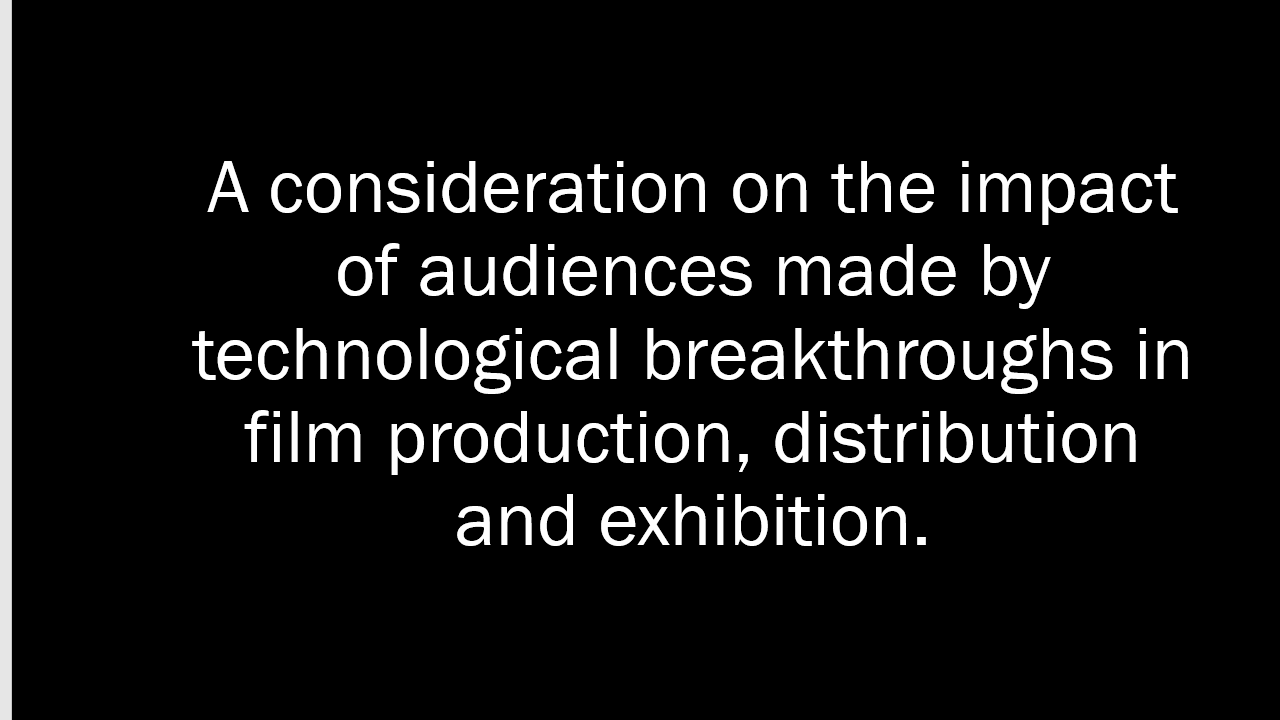
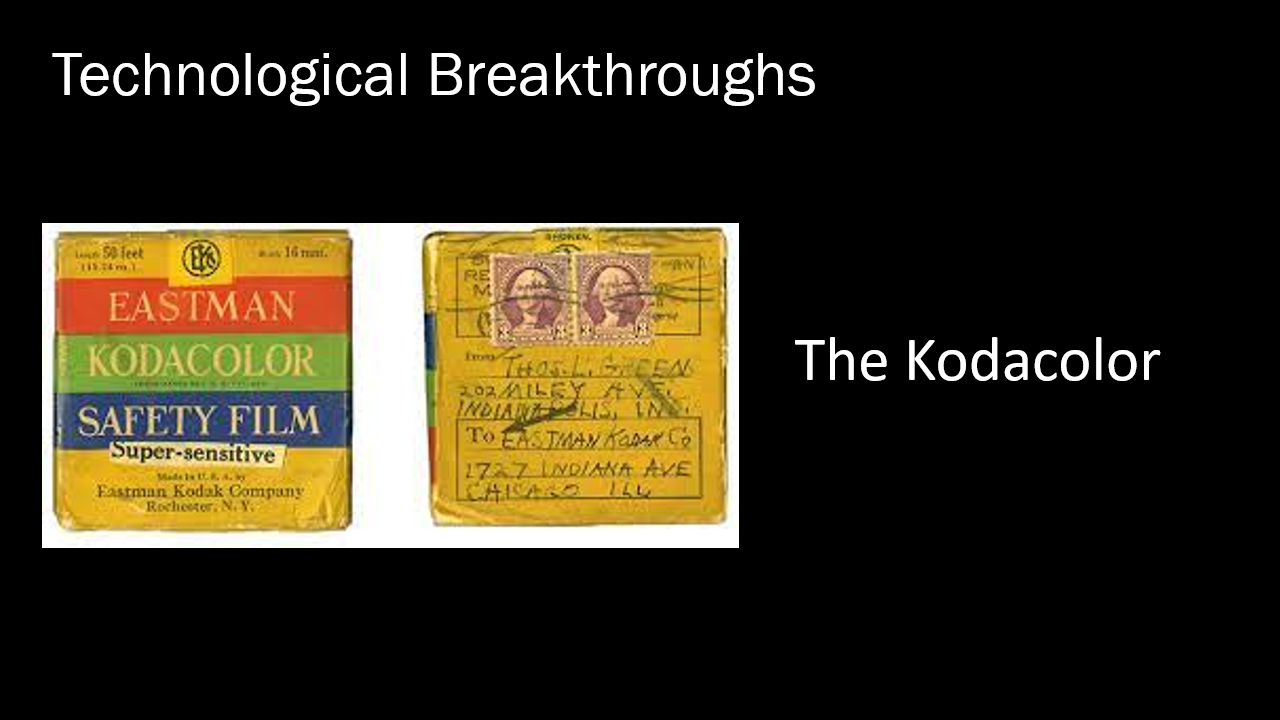
In 1927 The Jazz Singer came out being the first movie to include sound. The Sound was created and replicated using a Vitaphone.
In 1928 Kodak came out with the a 16mm amateur film camera called the Kodacolor for the mass market. It was to create coloured still images but was shortly after worked on more to be released in the 1950s.
Kodacolor (filmmaking) was an early movie system that used filters to record additive colour on monochromatic lenticular film.
The transition to sound-on-
film technology occurred
mid-decade with the talkies
developed in 1926-1927.
This made movies fun. Audience were drawn away from day-to-day life as now movies had sound. Things seen in movies began to be seen in the average life as audiences copied what they had seen in films.
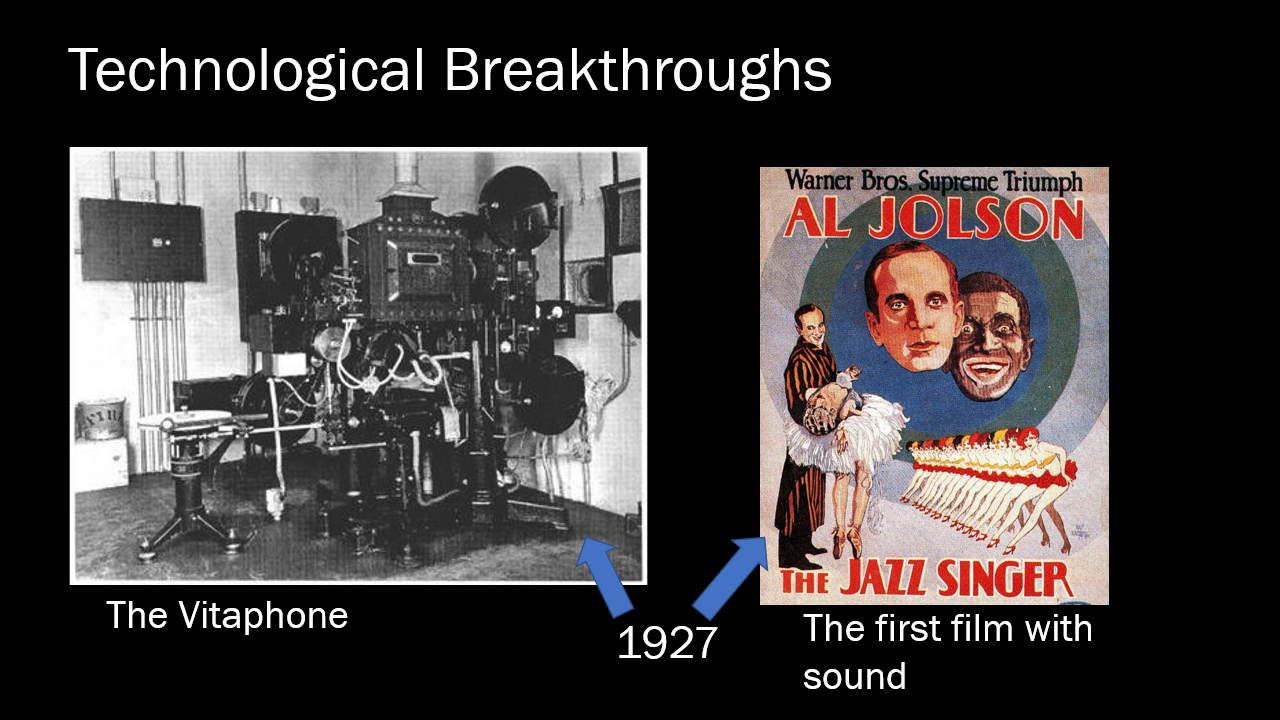
The transition to sound-on-film technology occurred mid-decade with the talkies developed in 1926-1927.
The sound was created using a device called the Vitaphone. These then became talkie films as you can hear talking during the films from the characters.
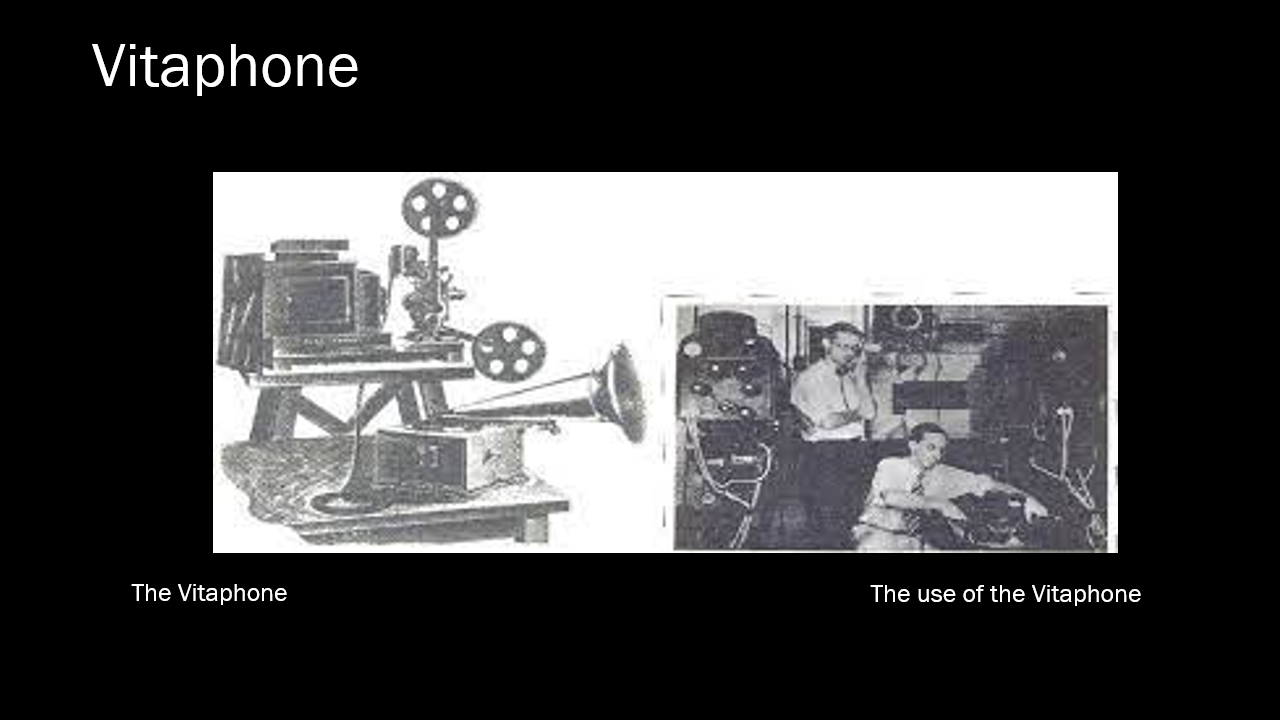
The Vitaphone system, allowed recording soundtracks and spoken texts on disks that were then reproduced at the same time as the film.
Vitaphone was a sound film system used for feature films and nearly 1,000 short subjects made by Warner Bros. and its sister studio First National from 1926 to 1931. Vitaphone was the last major analogue sound-on-disc system and the only one that was widely used and commercially successful
.
The significance of the Vitaphone was the fact that you could see and hear moving images simultaneously
The Vitaphone was a sound-on-disc system developed by Bell Telephone Laboratories and Western Electric.
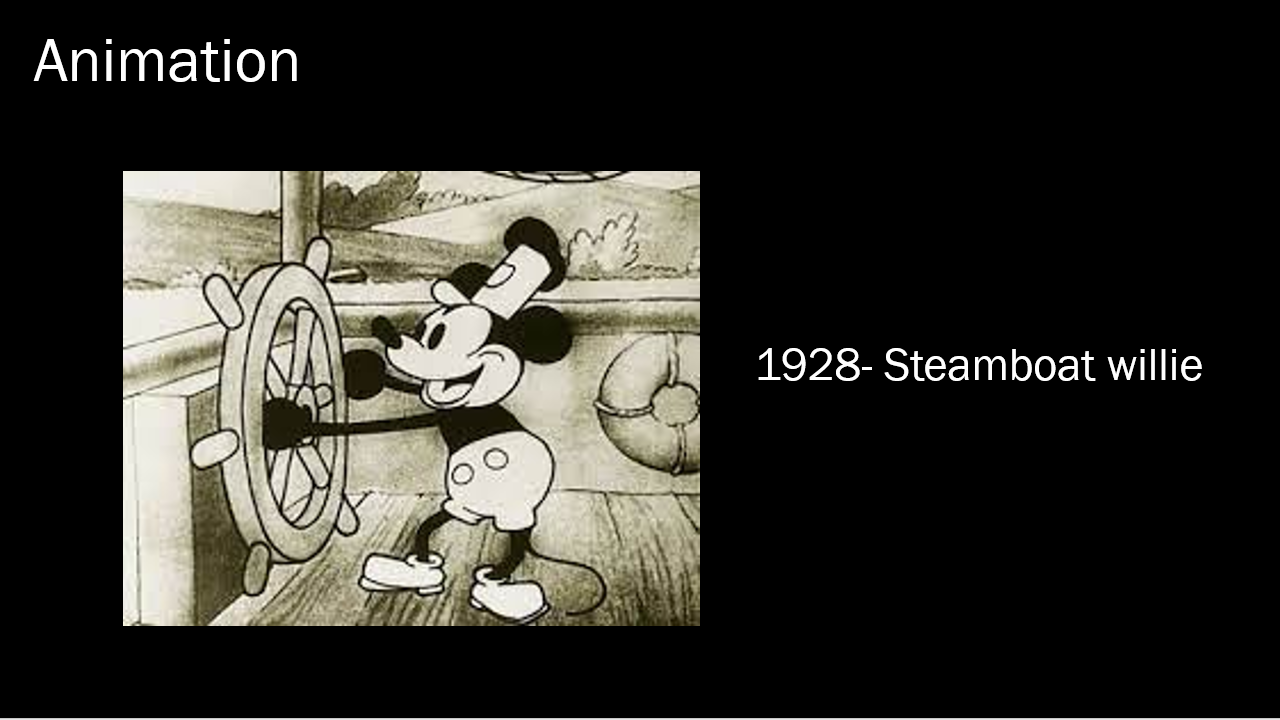
Walt introduced animation with sound which has been adapted as time goes on but Walt began the concept of animation with Mickey Mouse being the main star of the first ever animated film with sound that is timed with the picture.
As Walt Disney released the first animated film which included sound of Steamboat Willie in 1928, Walt officially introduced the golden age of animation.
The method, known as sound cartoon, allowed to synchronize cartoons and sounds.
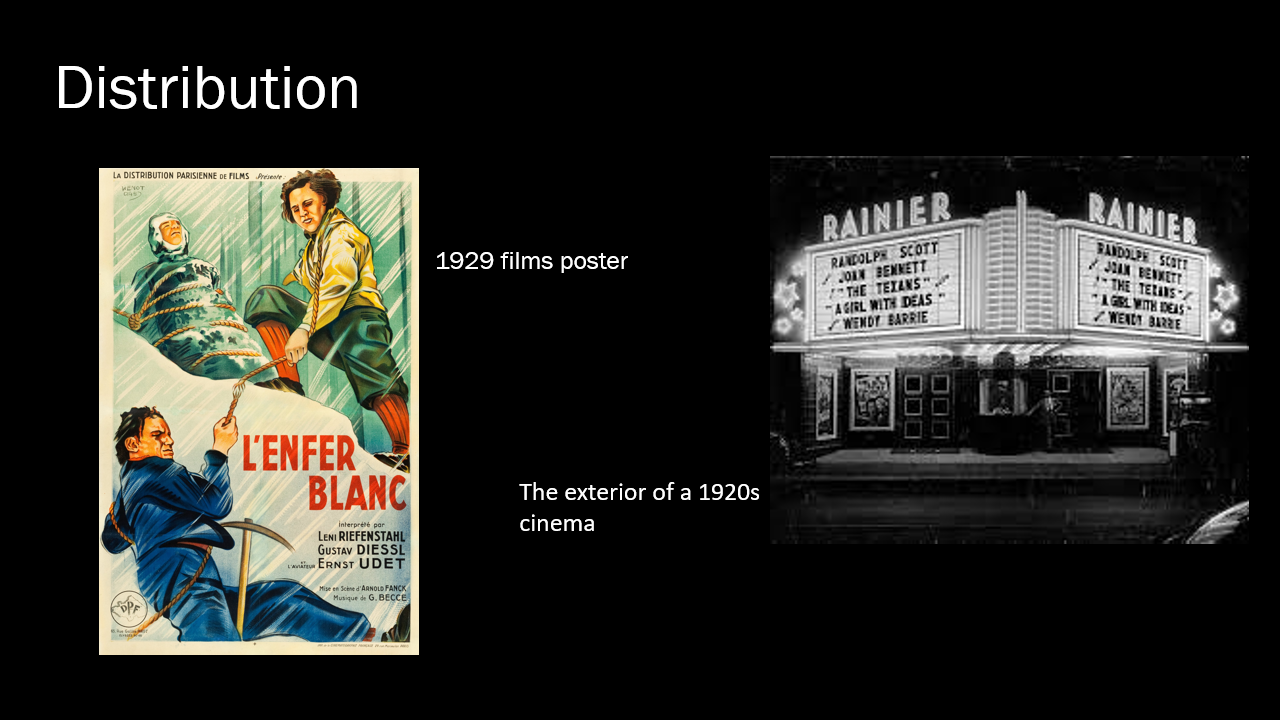
Films were distributed to audiences through cinemas which looked like palaces and could hold up to thousands per screening. These cinemas were promoted to the public through posters.
Every film shown in the 1920s were silent. Until 1927 when “Talkies” were invented and so film could have sound.
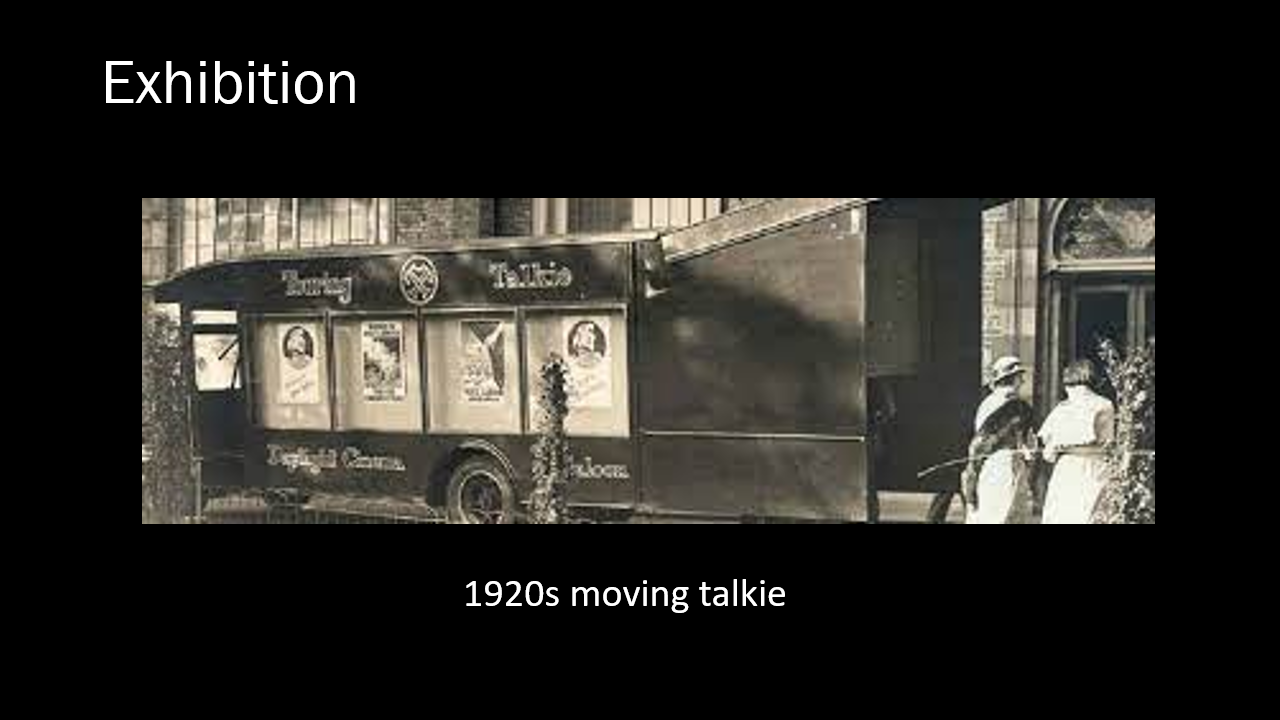
Film exhibition in the 1920s was typically through posters like the distribution of films but also the introduction to the “moving talkie”.
The moving talkie drove around and played films to the public.
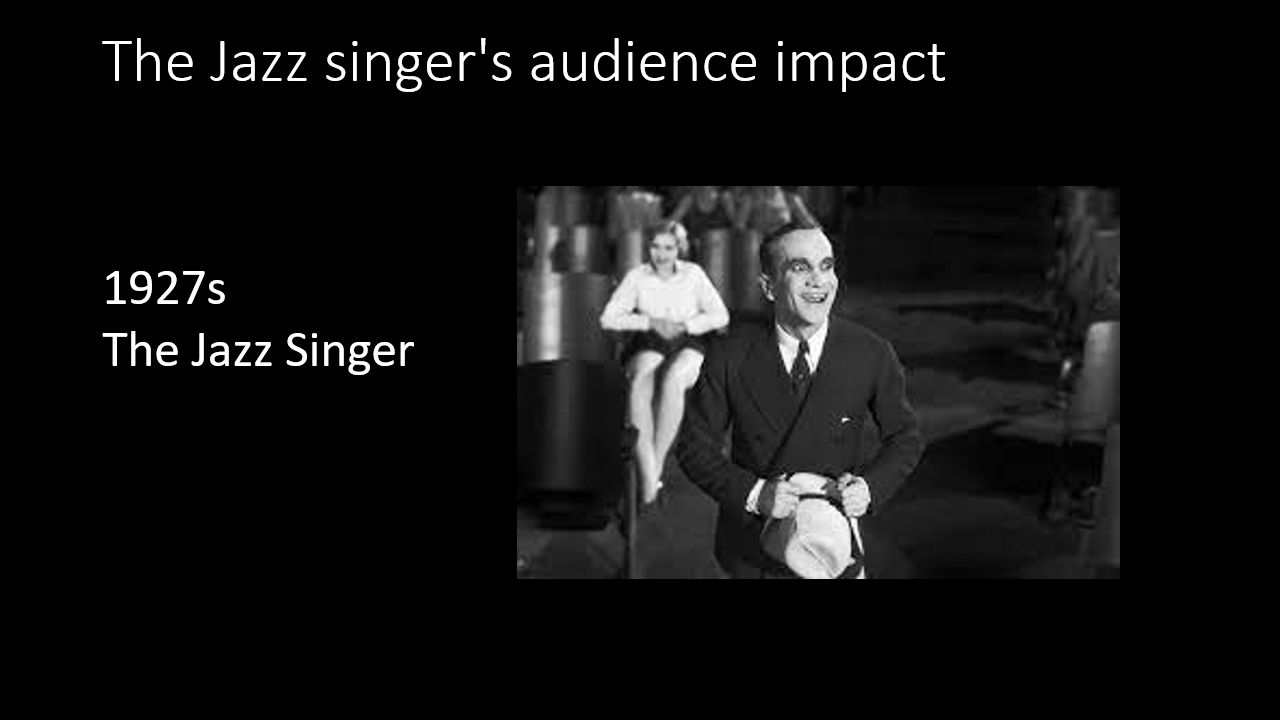
Considered the first successful audible picture
There was other recorded films with sound before the jazz singer the first one being, Don Juan released on August 6th 1926
The Jazz Singer was only part talkie but was still the first ever film to be a talkie, but on July 8th 1928 the film Lights Of New York was released and considered to be a full talkie.
By 1929 all films had become all talkies which means the majority of the film was all talking which is what films are today.
Majority of the new all talkie films in 1929 have been lost or have only got the silent version left of what was created where as the main 3 revolutionary films within these years still exist.

Cinemas could hold just over half of each town/Citys population.
Audiences of all ages attended screening of films in the 1920s. Majority of the audience members going more than once a week.
About 50 million people went to film screenings across the world each week.
More importantly going to the cinema gave audiences a break from reality and allowed people to enjoy themselves and have fun.
Films were 15 cents to go see which is now $2.09.
In 1920 due to increased prosperity Americans had more disposable income to spend on entertainment and so people started to go to cinemas more than once a week as they had the time and money to.
